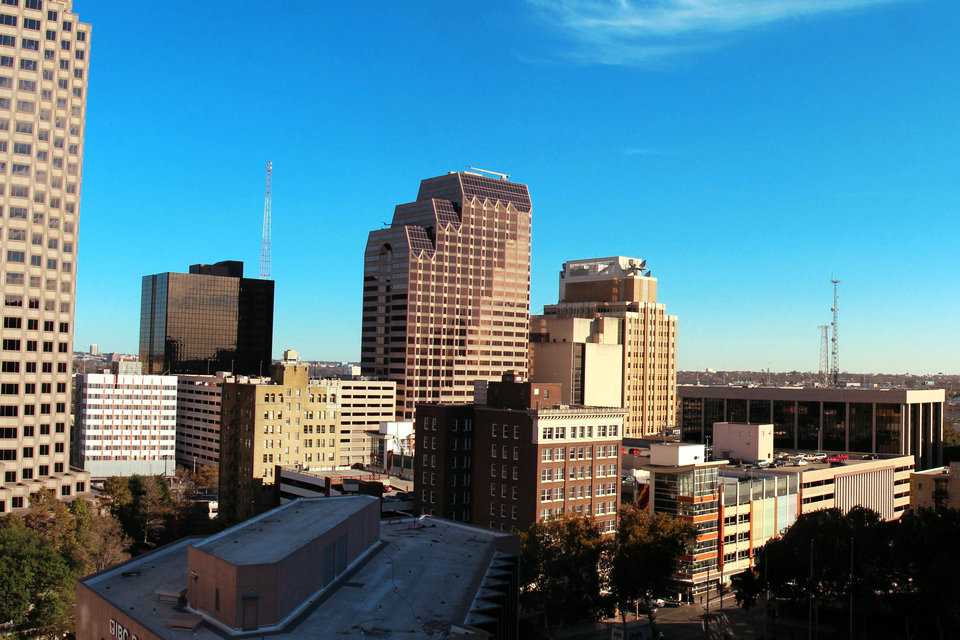Architecture of San Antonio


Architecture in the American city of San Antonio, Texas comes from a wide variety of sources, but many of the city’s buildings reflect Texas’ Spanish and Mexican roots; with some influence from French builders, among others. Relatively rapid economic growth since the mid twentieth century has led to a fairly wide variety of contemporary architectural buildings.
Traditional architecture
The first European buildings in Texas were a series of religious Spanish Missions built by Catholic Dominicans, Jesuits, and Franciscans to spread the Christian doctrine among the local Native Americans, and to give Spain a toehold in the frontier land. The missions introduced European livestock, fruits, vegetables, and industry into the Texas region. In addition to the presidio (fort) and pueblo (town), the misión was one of the three major agencies employed by the Spanish crown to extend its borders and consolidate its colonial territories. In all, twenty-six missions were maintained for different lengths of time within the future boundaries of the state. The San Antonio de Valero Mission known for the Battle of the Alamo is a prime example of this kind of architecture in San Antonio. Among other examples are:
Mission San Juan Capistrano
Mission San Francisco de la Espada
Mission San José
Mission Concepcion
Espada Acequia
Among other notable buildings of historical, architectural, and religious significance are the Basilica of the National Shrine of the Little Flower and Cathedral of San Fernando, both still in use. While most of these were influenced by Spanish and Mexican styles of design, some buildings display other origins. Francois Guilbeau’s House, for example, was built in 1847 by Jules Poinsard, and harbors 19th century French Neo-classic elements, while Hipolito F. Garcia Federal Building and United States Courthouse (1937) is of a Beaux-Arts design, and yet Koehler Cultural Center (1901) carries prominent influences of Victorian and eclectic designs.
Bexar County has a distinct courthouse in Downtown San Antonio. The Bexar County Courthouse, like many of the aforementioned buildings in the city, is a historical landmark and protected city heritage of San Antonio.
Among other older notable buildings in San Antonio are the Pearl Brewing Company, the Spanish Governor’s Palace, The Majestic Theatre, and many houses to the immediate south of Downtown San Antonio, located in the King William Historic District, built by 19th century German industrialists.
19th century vestiges of the tourism industry
Much of the architecture of Downtown San Antonio, both old and new, has traditionally revolved around the tourism attractions industry. Buildings like The Aztec Theatre, La Villita, Fairmont Hotel, and Menger Hotel are over a century old, and are still in use today.
San Antonio Walks – offers an Architecture Tour
Contemporary architecture
In addition to the city’s traditional architecture, San Antonio also has some noteworthy contemporary buildings. Many world class architects have left their enriching marks on the landscape of the city. Some facilities harbor the marks of multiple architects. The San Antonio Museum of Art and The McNay Museum of Fine Arts are examples of aesthetic buildings where craftsmanship of the old and the new have merged into one. Some of the city’s more prominent contemporary works have been summarized in the table below:
Tower of the Americas O’Neil Ford 1968
Trinity University campus O’Neil Ford and Kell Munoz Architects 1960s
Northrup Hall, Trinity University Robert A. M. Stern 2004
Lucile Halsell Conservatory, San Antonio Botanical Garden Emilio Ambasz 1988
Administration building, UTHSCSA HKS, Inc. 2004
South Texas Research Facility, UTHSCSA Rafael Viñoly 2011
The Grand Hyatt of San Antonio Arquitectonica 2008
McNay Museum of Art extension Jean-Paul Viguier 2002
San Antonio Public Library Ricardo Legorreta 1994
AT&T Center Ellerbe Becket 2002
Medical Arts & Research Center, UTHSCSA FKP Architects 2010
Alamodome Populous (former HOK) 1990
Skyline
While the skyline is not the tallest in Texas (Houston, Dallas and Austin are taller), Downtown San Antonio is a unique one with a mix of old and new styles of architecture.
Some buildings, such as the Emily Morgan Hotel, Gunter Hotel, the Nix Medical building, The AT&T Building (105 Auditorium Circle), Drury Hotel, and Tower Life Building date back to the early to mid twentieth century, and are considered national or state landmarks. These are “exceptional examples of NeoGothic Revival architecture, complete with carved faces (grotesques), gargoyles, and other carved stone embellishments”.
Other buildings add a more modern tint to the city’s skyline. Among these, the most prominent are the Tower of the Americas, The Weston Center, the Marriott Rivercenter, and the Grand Hyatt. Yet other buildings, such as The Vistana complex, offer a more Art Deco form of architecture to the city’s image.
Education
The primary school for higher education in architecture is the University of Texas, San Antonio, at its Downtown Campus. However, Trinity University in Midtown San Antonio has a notable architectural campus and also offers baccalaureate degrees in the field.
Source From Wikipedia